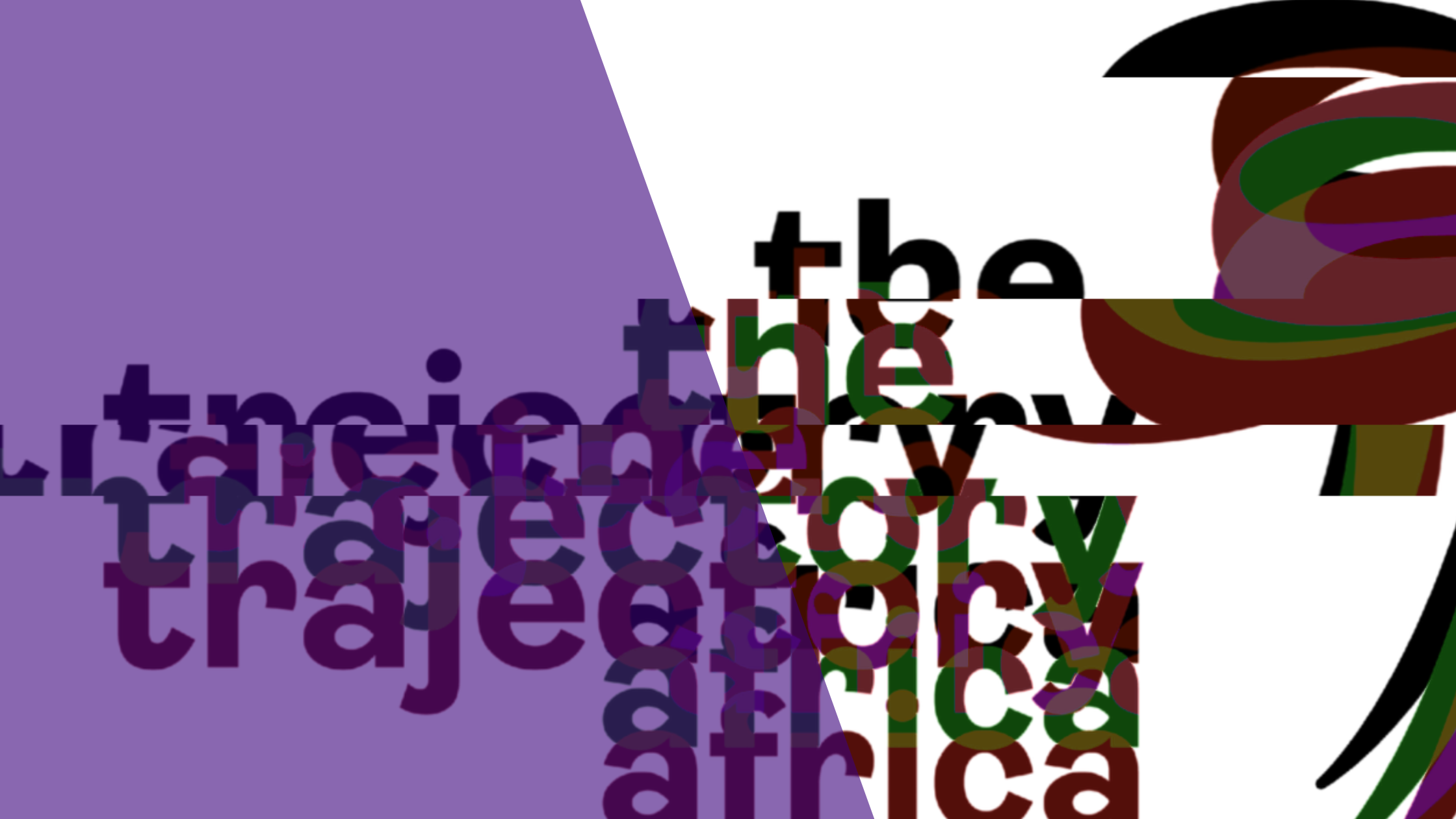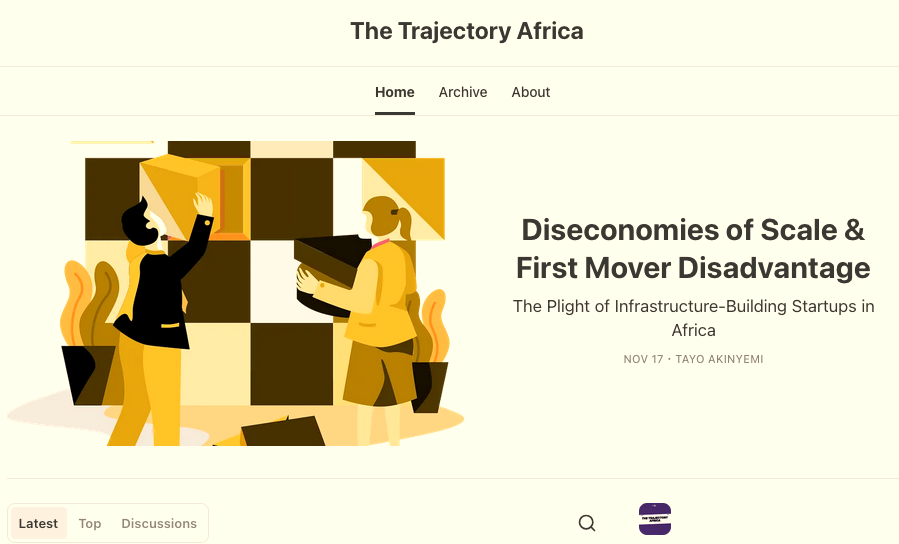The Trajectory Africa Distilled #01: The Limits of Digitalisation in African Markets
In the opening instalment of her seven-part email series, Tayo Akinyemi explores why African fintech companies opt to build physical infrastructure to enable digital solutions - and identifies five opportunities emerging from this constraint.

Hello, Everyone!
I'm Tayo Akinyemi, and I'm delighted to launch this seven-part email/article series in collaboration with African Tech Roundup.
After four years producing The Trajectory Africa podcast - conducting deep-dive conversations with founders, investors and analysts across the continent - I've accumulated insights that could use more structured exploration.
I started the podcast to solve a basic problem: I didn't understand venture capital in Africa. Sure, like everyone else, I read the annual reports and followed the headlines. But I couldn't explain, for example, why fintech was capturing the lion's share of capital, or why certain sectors were being overlooked entirely.
This series distils key themes from those conversations, particularly from our series on fintech, digital commerce, and logistics, where patterns emerged that challenged conventional wisdom about building tech businesses in African markets. In these emails, I'll share what I've heard from the front row - the observations - and what I've learned from synthesising those observations into broader insights.
My aim isn't to offer definitive answers, but rather to share analysis grounded in real founder experiences that can inform how we think about building and funding ventures here. For more in-depth explorations of these themes, you can follow my work on Substack.

Today's piece addresses a fundamental, but perhaps underappreciated reality that shapes many African tech businesses.

"If your business plan says we're going to sell croissants, usually three months in, what you realise is that you also need to make the flour and pump the water."
-- Jean-Claude Homawoo
The croissant problem
Jean-Claude Homawoo, Co-founder and CEO of Lori, describes a common reality for African founders: "If your business plan says we're going to sell croissants, usually three months in, what you realise is that you also need to make the flour and pump the water."
This observation captures a fundamental constraint that surfaced repeatedly in conversations on The Trajectory Africa.
In a nutshell: bits can't fully replace atoms. Abraham Augustine articulated this in his early writing on Africa's digital economy, and the logic still holds. You can't build asset-light solutions if the assets you aim to digitalise don't exist yet - an Uber app can't coordinate drivers and passengers without cars and bikes. Digital infrastructure can help circumvent inadequate physical infrastructure, but it can't eliminate the need for it entirely. This means that technology companies often have to invest in physical assets to deliver reliable services, which can stretch startups beyond their core competencies.
Yet within these constraints, opportunities emerge. In conversations with thirteen founders, investors and analysts for the podcast's fintech series, five opportunities surfaced.
Five infrastructure-building opportunities
Trade-boosting credit. Trade drives economic development, and credit powered by data liberated from silos can boost that trade. The opportunity lies in creative credit scoring that accurately assesses risk.
As Emeka Ajene explained, companies like Intelligra partner with MTN to access customer data - recharge patterns, for example - to offer financing for data bundles and devices. "There's a lot of non-traditional data that exists, but it's siloed. You need to be creative in how you access it," he noted. The challenge, of course, is that lending remains a difficult competence to master.
Cross-border payments. The intercontinental movement of money is an unlock for the rest of the financial system. Mobile money reached people's homes through their SIM cards, cracking in-country, mass market distribution. Companies like Onafriq built interoperability between mobile money networks, addressing fragmentation by reducing friction across disconnected systems. The unsolved problem that remains moving money between/across countries is settlement speed.
Although the movement of funds and compliance screening happen in real time, settlement doesn't - accounts must be prefunded, and manual reconciliation processes create delays. Integrating stablecoins could free up working capital trapped in prefunded accounts, fundamentally changing the economics of money movement.
Consumer payments infrastructure. With fragmented payments infrastructure, there's value in serving as a neutral third party to integrate multiple banks, telcos, payment methods and mobile money accounts. This means that infrastructure builders can capture significant value, but building ubiquitous infrastructure is both difficult and expensive because most distribution is offline.
Companies face a choice: own the infrastructure, which is hard to do across geographies, or lease it, which makes controlling costs challenging and can lead to price-based competition amongst over-the-top (OTT) players.
Niche neobanking. Selecting a niche could be a winning strategy, whether serving enterprises or consumers. For example, Rank initially built on traditional savings and lending group models, using social intelligence to underwrite loans to micro business owners like mobile money agents. The company derisked lending by collecting data on individual and group performance, creating community pots to fund defaults, and devolving fund recovery to groups that self-police.
Fingo is betting on young Africans as the next generation of financial services users, cultivating them through financial literacy and serving their needs as they mature.
Asset-based financing. Presumably, digital infrastructure can be built more quickly than physical infrastructure to deliver critical goods and services. Companies like MAX leverage what exists - 2G coverage, for example - to monitor vehicles and create asset-light infrastructure for vehicle financing that connects asset financiers, owners and drivers.
MAX and other companies such as Moove and Pezesha give credit providers access to embedded credit decisioning engines that enable financing to be provided, or provide it themselves. However, lending is a difficult competence to master, and startups should carefully consider whether to deliver these services internally or partner with external lenders who can leverage their data to inform credit decisioning.
Why infrastructure building remains an opportunity
What strikes me about these five opportunities is that they're all infrastructure plays. As a result, I'm exploring a hypothesis that the current generation of fintech players is mostly building infrastructure, which connects back to the limits of digitalisation. Assets come first, then the solutions that leverage those assets follow.
Successful infrastructure building is valuable because you can charge a toll - transaction fees - for its use. It's also hard to dislodge reliable infrastructure once it's built, so it becomes entrenched over time.
Flutterwave's position as one of Africa's most valuable fintechs demonstrates this. By building digital infrastructure, the company created a way for businesses like Uber to connect to payment gateways across multiple countries through a single integration, reducing friction and cost.
Because so much infrastructure remains to be built - Benji Fernandes of Nala suggests payments is only 1% built - there's still room for both cooperation and consolidation. Multiple companies can serve similar functions and find ways to coexist, at least for now, because the addressable market for infrastructure building remains vast.
This infrastructure lens raises questions about identifying and evaluating opportunities. If the hypothesis holds, understanding which infrastructure remains to be built - and which market conditions make that infrastructure fundable and profitable over time - becomes critical. It also suggests that the distinction between technology infrastructure and financial infrastructure matters more than I initially understood.
Coming up
In the next piece, I'll share what I've learned from filling gaps in my fintech knowledge as I work towards articulating first principles for VC-backable fintech opportunities in African markets. If you've got comments or questions about today's article, reach me at tayo@queryinsights.co.
Till the next one...
Tayo

